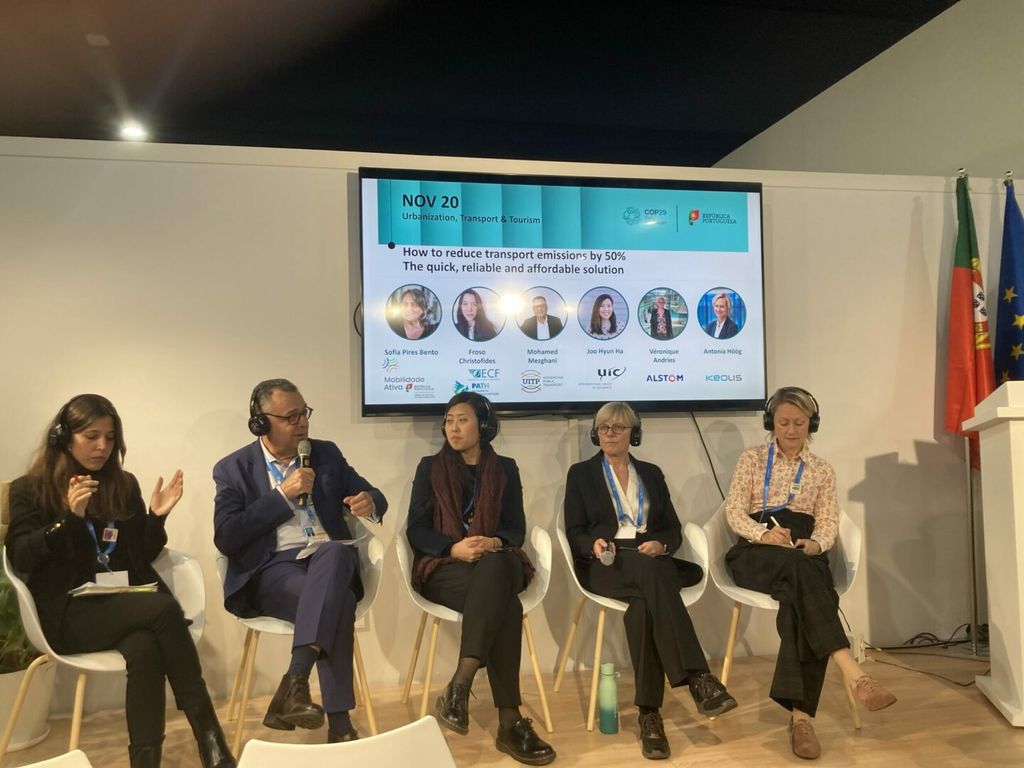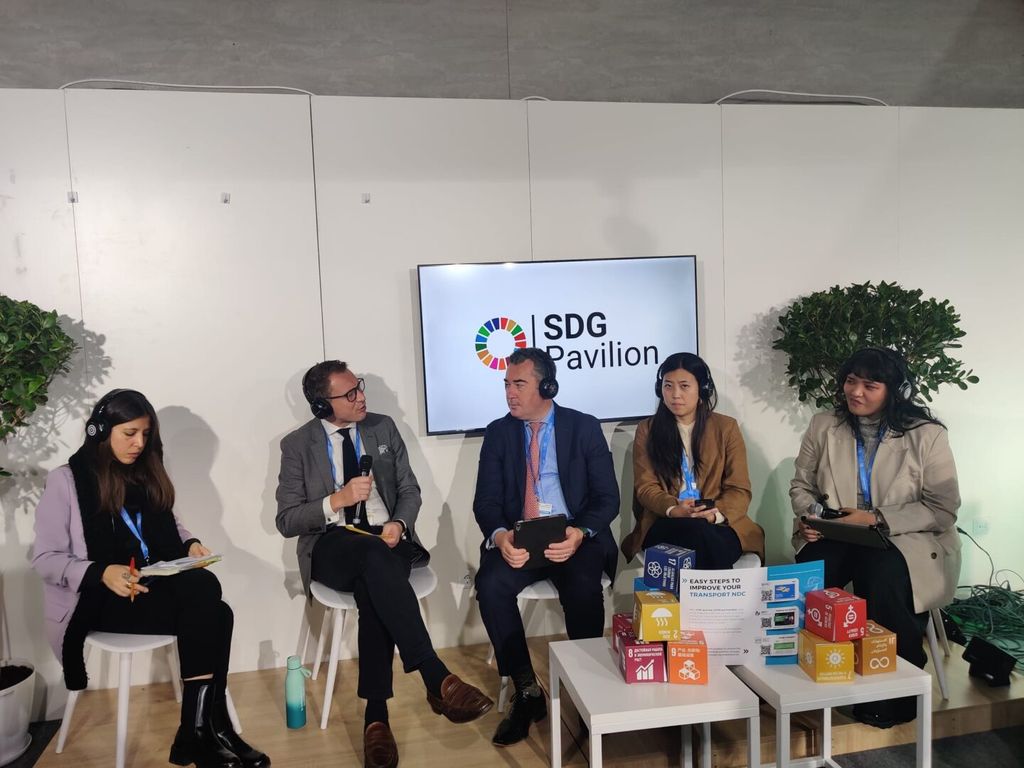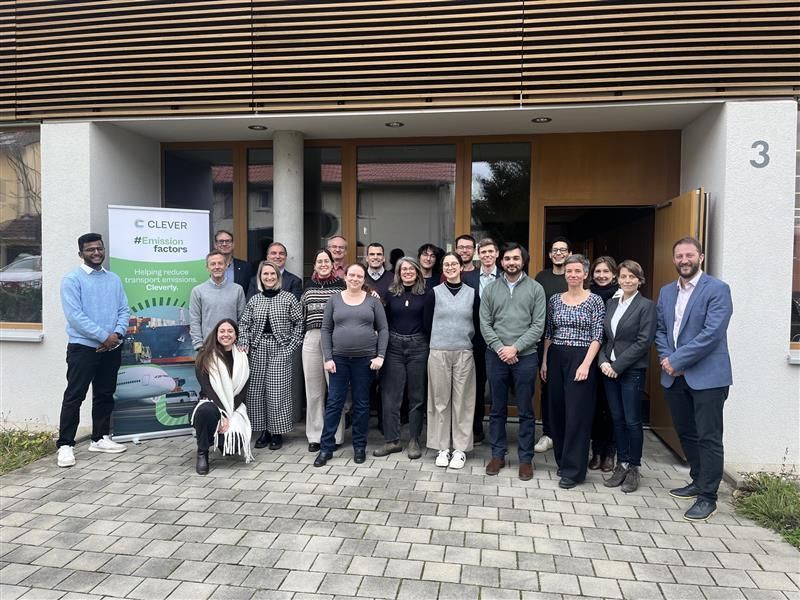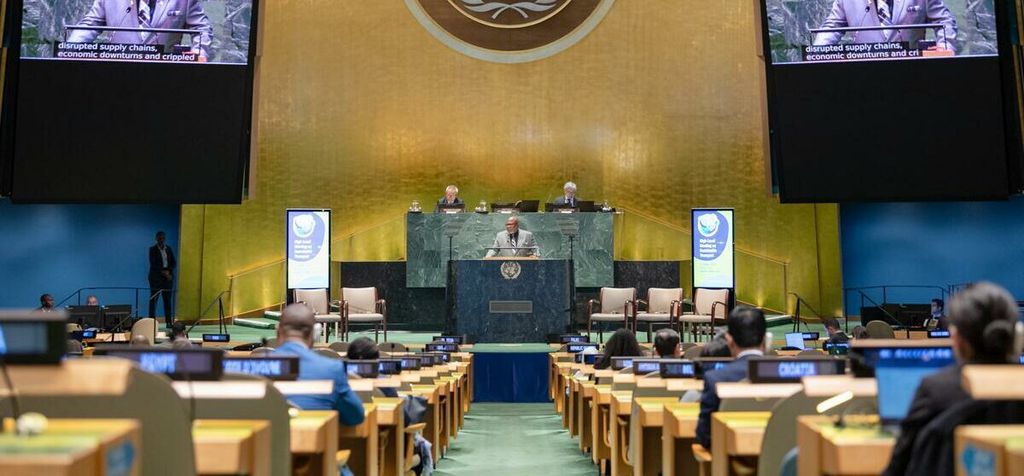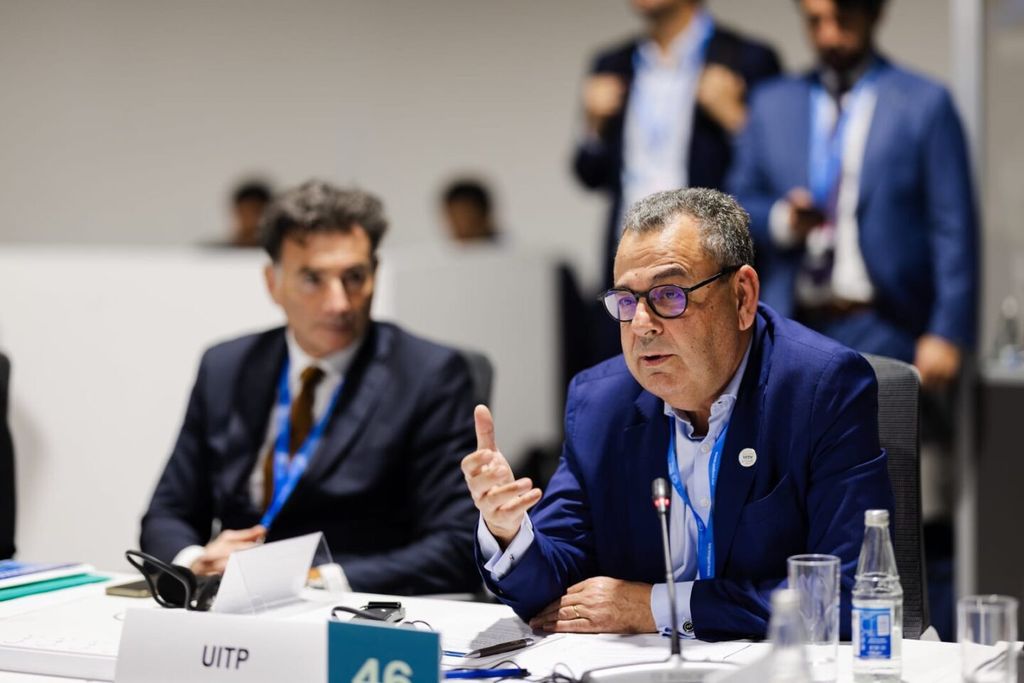
COP29: public transport at the centre as countries update their climate strategies
This year’s COP29, ongoing since 11 November in Baku, Azerbaijan aims to deliver deep, rapid and sustained emission reductions to keep global temperature rise below 1.5 degrees. The transport thematic day, that took place on 20 November highlighted solutions to deliver more ambitious climate action plans in 2025.
UITP, represented by Secretary General Mohamed Mezghani* and Head of Sustainable Development Philip Turner, joined COP29 to raise awareness of public transport in national climate action plans (NDCs). They met with transport ministers, mayors, United Nations agencies and NGOs. Mohamed also took the opportunity to visit the city’s public transport operators and authorities.
Our message is clear: public transport plays a vital role both in fighting global heating and in adapting to a changing climate. Doubling the modal share of public transport and active mobility, can achieve a 50% reduction in transport emissions. Still, a third of countries don’t include public transport in their national climate strategies.

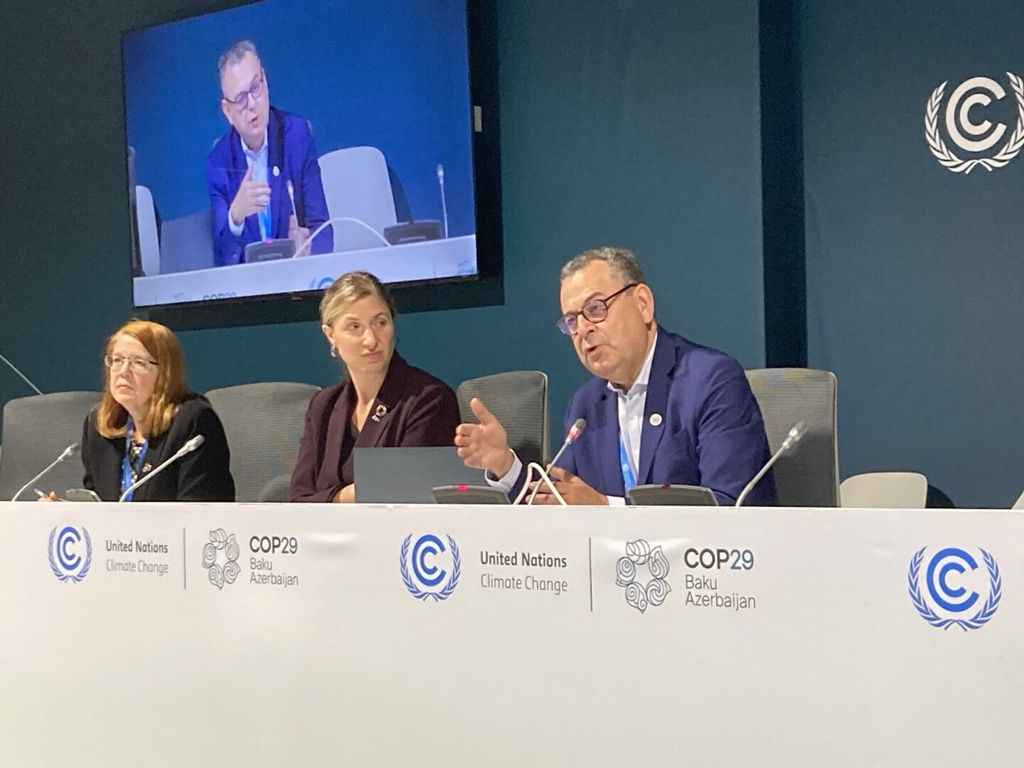
An underlying theme of COP29 is the pressing need for countries to update their NDCs within the next 12 months. In NDCs, countries make commitments to reduce national emissions and adapt to the impacts of climate change. With current strategies insufficient to meet the objectives of the Paris Agreement, we will need ambitious objectives for decarbonisation.
A just, clean and accessible mobility system for all, with public transport as the backbone, is essential to achieve this. Increasing its modal share could halve urban transport emissions by 2030, offering a faster and more cost-effective solution than technology alone. Yet, only two thirds of countries have included public transport in their NDCs.
To support governments in incorporating public transport into their NDCs, Mohamed Mezghani presented UITP’s ‘public transport NDC template’ to the world’s transport ministers. The template is designed to guide national governments in integrating public transport and active mobility strategies into their climate strategies. This approach is essential to meeting the ambitious climate goals set for 2025 and beyond.
By aligning transport policies with climate goals, governments can significantly accelerate the transition toward a low-emission transport system, ultimately enabling citisens to reduce their transport emissions by 50%.
The guide is an integral part in the UNFCCC Climate Champion’s Avoid Shift Breakthrough, which aims to ‘double the share of energy efficient and fossil-free forms of land transport for people and goods by 2030, by focusing on shifts to public transport, walking, cycling and rail freight, as well as electric vehicles and railways’.
At the Transport Ministerial Meeting High Level Roundtable 2 on Greening Urban Transport, UITP Secretary General Mohamed Mezghani* outlined how countries can unlock the true potential of public transport in their updated NDCs. They should:
- Set clear transport emissions reduction targets, motivating countries to set modal shift goals to public transport as a key strategy.
- Aim to scale up green public transport infrastructure, low and zero emissions vehicles, and increased services to achieve those modal shift goals.
- Include public transport in broader national strategies, aimed at reducing car dependency and ensuring national policies translate into local green transport actions.
- Facilitate capacity building, especially in developing countries, to help design and manage sustainable public transport systems. UITP’s NDC guide can help support this effort.
- Promote international cooperation and increase access to climate finance for transport projects, helping low and middle-income countries develop and scale up public transport. The transport sector still faces the largest investment gap.
Presidency adopts map declaration
The COP29 presidency also adopted the declaration on Multisectoral Actions Pathways (MAP) to Resilient and Healthy Cities, in which countries commit to ‘develop and implement a vision for low- and zero-emission integrated and connected transport systems by promoting increased use of public transport and safe access to active mobility options.’
The initiative builds on the Global Stocktake decision adopted at COP28, setting a good example for how to develop targets to achieve the critical reduction of road transport emissions from a range of pathways.
Achieving a 50% reduction in transport emissions requires doubling the share of public transport, supported by ambitious NDC targets. Investments in low and zero-emission public transport, coupled with accessible and inclusive networks, are key to driving a shift from private vehicles to sustainable mobility.
Strong political leadership and integrated governance models are essential for aligning transport policies with climate goals. By prioritising public transport as the easiest and most attractive option, governments can accelerate emissions reductions while improving urban quality of life.
With the COP negotiations drawing into their final days, there is broad interest in including public transport in national climate strategies. UITP will continue to support governments to ensure the 2030 NDCs will truly utilise the tremendous power of public transport to fight global heating.
*Acting on behalf of Mohamed Mezghani ASRL
Mohamed Mezghani* speaking at the Portuguese Pavilion at COP29.
Membership benefits

